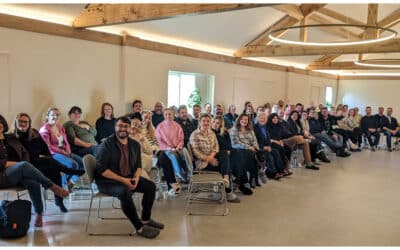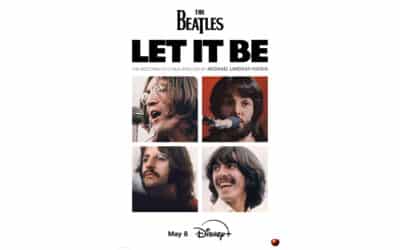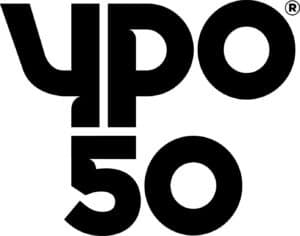It’s no secret that everyone is trying to get under the skin of Gen Z: the generation that’s set to start dominating the workplace, writes Laura Cavanagh of Aberfield Communications in Leeds.
Like any audience we’re looking to influence, we want to know where they are, what they do / don’t like, what makes them tick and how they want to be communicated with. And the same approach should be taken when it comes to internal comms.
Lots of brands are successfully engaging with Gen Z from an external comms perspective, but it’s also important to look at how this insight can be applied to an organisation’s internal comms strategy. Especially given that Gen Z are willing to snub a workplace if they don’t believe the role will provide them with job security, or if they feel there’s a lack of progression.
Internal comms professionals looking to connect with a workforce under the age of 23 need to be prepared to overhaul their engagement strategy. A big part of that is being brave in breaking away from the traditional ways of communicating in the workplace, which may mean cutting out mass email campaigns and cumbersome intranets.
While there’s no denying that those channels may work for other generations, we need to acknowledge that if we’re to keep Gen Z engaged in the workplace then we need to shake up how we approach and implement internal comms. This requires flexibility and avoiding a one-size-fits-all approach.
So, what do we know so far?
We know that Gen Z expect to work flexibly, both in terms of time (be prepared to say goodbye to the 9-5pm working day!) and location. With this comes the expectation of high-quality technology. This generation has grown up with some form of device constantly in their hands, or at least at their fingertips. They’re used to having on-demand access to information and technology that functions in a way that allows them to go about their daily lives with minimal disruptions.
That also means they’ve trained themselves to gather the information they need quickly. Consequently, that gives us approximately eight seconds to communicate with them.
They’re a passionate bunch, especially when it comes to cause-related activities. Gen Z want to be part of something they care about, and this is key when it comes to getting them to interact with an organisation.
Creating a Gen Z-friendly strategy
Firstly, it should be noted that we can’t generalise when it comes to workplace communications; if you send the same messages out to everyone, even if it’s in the same way, expect that they will receive and interpret them differently.
Using insight (and there’s plenty out there) to form the basis of your strategy will help you get a firm grasp on what Gen Z are expecting when it comes to communications.
Based on what we already know, engaging Gen Z employees should be focused on three principles:
Flexibility
This point goes beyond working hours and hot-desking. Flexibility in this context is about having an internal comms strategy that’s robust enough to shift and change alongside the workforce.
It also extends to the tactics you implement. We know that dedicated employee-engagement apps, as well as the usual social media apps like WhatsApp, are set to drive workplace communications. But that’s just what’s current now. In the next 10 years there will undoubtedly be other technologies that other younger generations will expect to see at work.
If Gen Z are known for their digital dealings, then exploring apps and tools that will help you deliver messages to this generation is going to be a key part of your internal comms strategy. It’ll also mean you’re staying at the forefront of how emerging and current generations want to connect with an organisation.
Siemans executed a successful campaign that serves as a good example of how using the right tech can help engage new and young employees. The Future Makers app was launched to allow current colleagues and new starters to transport themselves around the world of Siemens, highlighting real employee stories in 3D so they could be experienced in VR.
Be creative
Emails and PowerPoint probably aren’t going to cut it for Gen Z. If you only have eight seconds to get your message across then content needs to be immediately impactful.
Don’t shy away from splitting internal campaigns based on your audience. Appreciating that different employee groups engage with different content will allow you to structure your creativity (if there is such a thing!) in a way that’s effective. The same approach should be taken in terms of your messaging. Tailoring the language and tone of voice you use will help you positively influence different audience sets.
We know visuals and video are hugely impactful for Gen Z, but in general that type of content is far more engaging than streams of text. We know Gen Z are passionate so if you can create content they enjoy, then you’re increasing the likelihood of them sharing it among their peers, which is a bonus.
Another case study of a creative campaign that worked well comes from Experian. By collecting stories from around the business they launched ‘Experian LIVE’ – a TED-style event to showcase video content that had been generated from employees across the business. This approach made it easier for employees to connect not only with each other, but also the brand.
Be inclusive
The last thing Gen Z want is to feel as though they’re being treated differently. Even though different communication methods may need to be adopted, they ultimately want to feel part of something. That’s what they’re passionate about.
Regardless of what you decide to implement, being flexible and willing to change-up how you approach internal comms will mean that you’re always generating meaningful and engaging employee comms.










